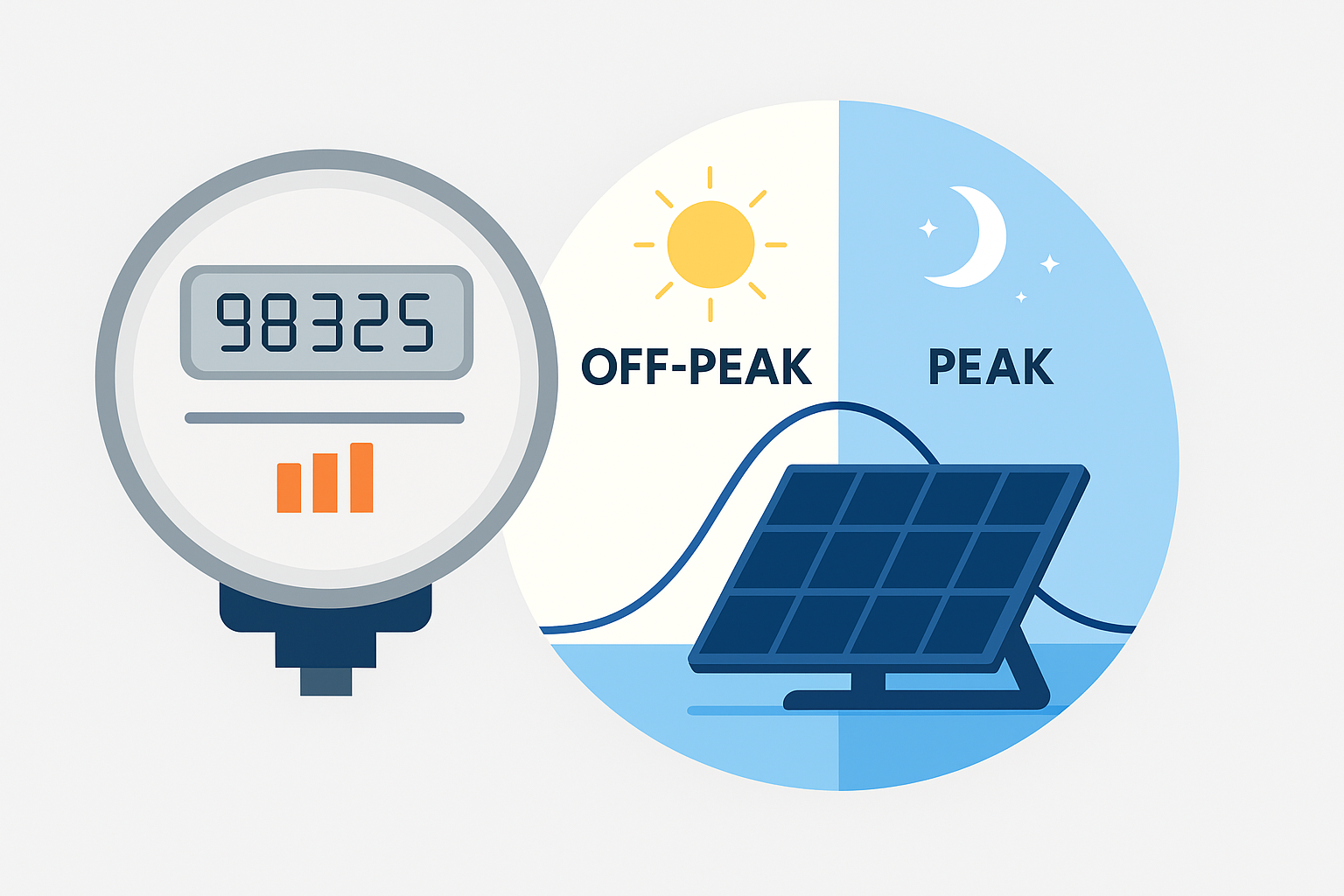If you've noticed different electricity rates depending on the time of day, you're not alone. Many utility companies now use Time-of-Use (TOU) billing, where the cost of power fluctuates based on demand. In this blog, we’ll explain the difference between peak and off-peak energy hours and how solar energy can help you take control of your bill.

What are peak and off-peak energy hours?
- Peak hours: These are the high-demand periods, typically late afternoon to evening (about 4–9 PM), when most households are actively using electricity.
- Off-peak hours: These are low-demand times, usually overnight or mid-day, when fewer people are using electricity and rates are lower.
Why does electricity cost more during peak hours?
Utility providers raise rates during peak times to reduce strain on the grid. This pricing model helps:
- Prevent power outages during periods of heavy use
- Encourage users to spread energy consumption more evenly throughout the day
- Delay or reduce the need for infrastructure upgrades
But for homeowners, it can lead to unpredictable spikes in their electric bills—especially during heatwaves or cold snaps when HVAC systems work overtime.
How solar panels help with TOU billing
Solar panels generate the most electricity when the sun is highest—typically between 10 AM and 3 PM. That timing overlaps with off-peak hours, helping you:
- Offset grid energy use during the most expensive times
- Store excess energy with a battery for use during peak hours
- Reduce your monthly electric bill and gain more predictability
Tips to reduce peak-time costs
You don’t need to change your lifestyle drastically—just be strategic with energy use:
- Run dishwashers, laundry, and other large appliances during off-peak hours
- Use programmable thermostats to manage heating and cooling more efficiently
- Unplug devices or use smart power strips to cut down on phantom load
- Consider a solar-plus-storage system to maximize savings
Example of TOU billing impact
Here’s a quick look at how TOU billing can affect your monthly bill:
- Off-peak rate: $0.12 per kWh
- Peak rate: $0.24 per kWh
- Usage example: Using 500 kWh during peak hours costs $120—double the $60 it would cost off-peak
That’s a difference of $60 every month, or $720 per year, just based on timing.
Want more control over your energy costs?
By going solar, you can stabilize your bill, reduce your reliance on the grid, and avoid the worst of TOU pricing.



































